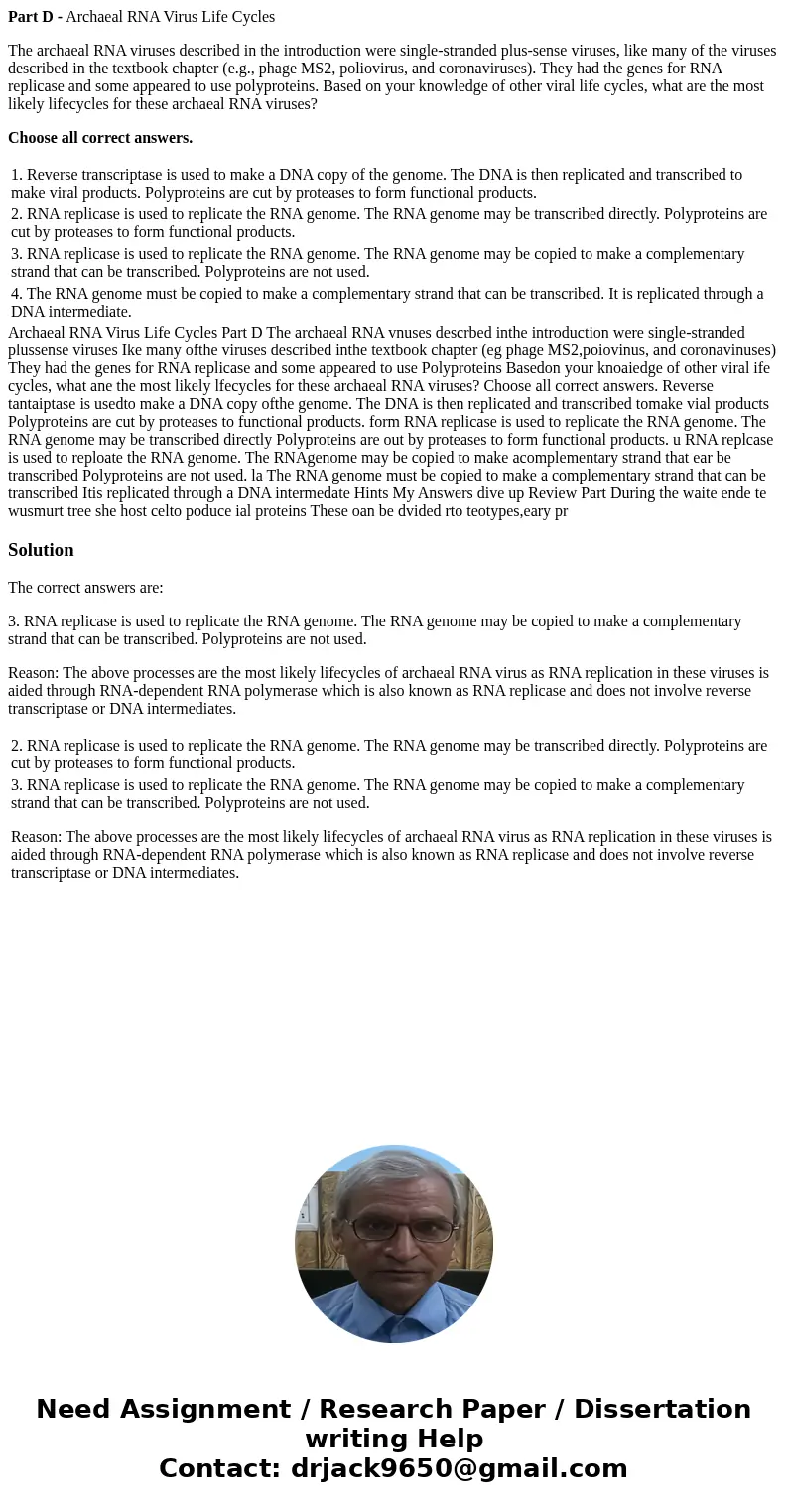Part D Archaeal RNA Virus Life Cycles The archaeal RNA viru
Part D - Archaeal RNA Virus Life Cycles
The archaeal RNA viruses described in the introduction were single-stranded plus-sense viruses, like many of the viruses described in the textbook chapter (e.g., phage MS2, poliovirus, and coronaviruses). They had the genes for RNA replicase and some appeared to use polyproteins. Based on your knowledge of other viral life cycles, what are the most likely lifecycles for these archaeal RNA viruses?
Choose all correct answers.
| 1. Reverse transcriptase is used to make a DNA copy of the genome. The DNA is then replicated and transcribed to make viral products. Polyproteins are cut by proteases to form functional products. |
| 2. RNA replicase is used to replicate the RNA genome. The RNA genome may be transcribed directly. Polyproteins are cut by proteases to form functional products. |
| 3. RNA replicase is used to replicate the RNA genome. The RNA genome may be copied to make a complementary strand that can be transcribed. Polyproteins are not used. |
| 4. The RNA genome must be copied to make a complementary strand that can be transcribed. It is replicated through a DNA intermediate. |
Solution
The correct answers are:
3. RNA replicase is used to replicate the RNA genome. The RNA genome may be copied to make a complementary strand that can be transcribed. Polyproteins are not used.
Reason: The above processes are the most likely lifecycles of archaeal RNA virus as RNA replication in these viruses is aided through RNA-dependent RNA polymerase which is also known as RNA replicase and does not involve reverse transcriptase or DNA intermediates.
| 2. RNA replicase is used to replicate the RNA genome. The RNA genome may be transcribed directly. Polyproteins are cut by proteases to form functional products. |
| 3. RNA replicase is used to replicate the RNA genome. The RNA genome may be copied to make a complementary strand that can be transcribed. Polyproteins are not used. Reason: The above processes are the most likely lifecycles of archaeal RNA virus as RNA replication in these viruses is aided through RNA-dependent RNA polymerase which is also known as RNA replicase and does not involve reverse transcriptase or DNA intermediates. |

 Homework Sourse
Homework Sourse